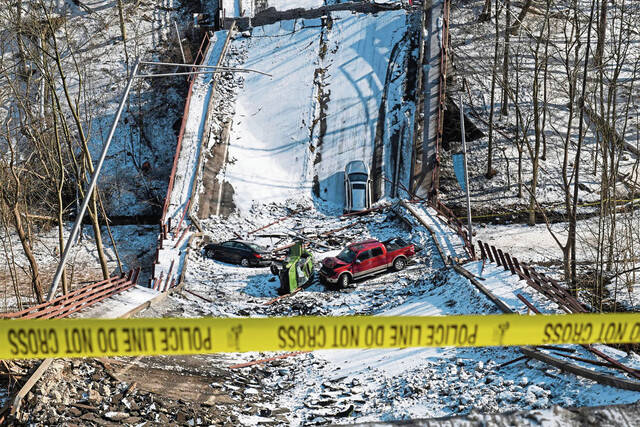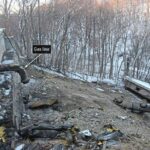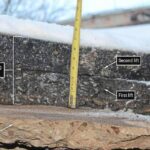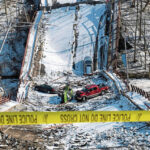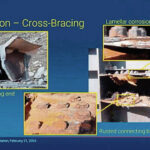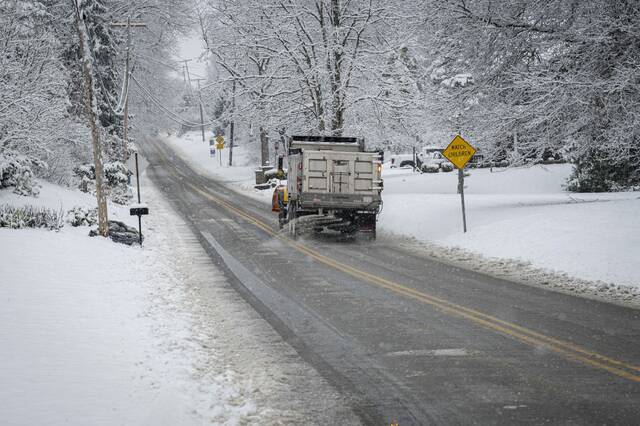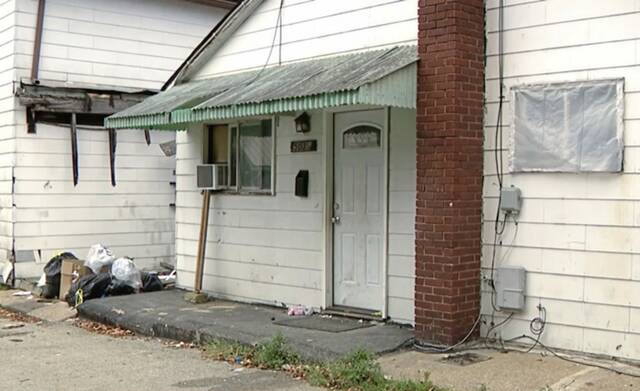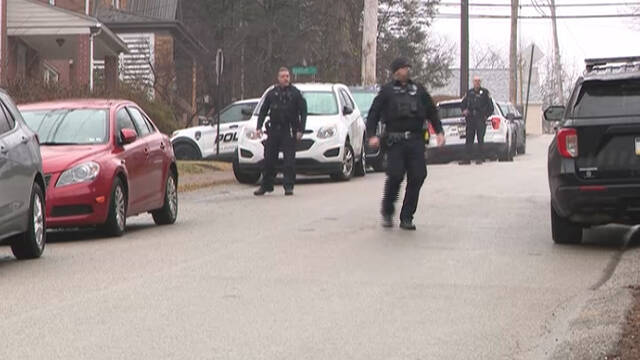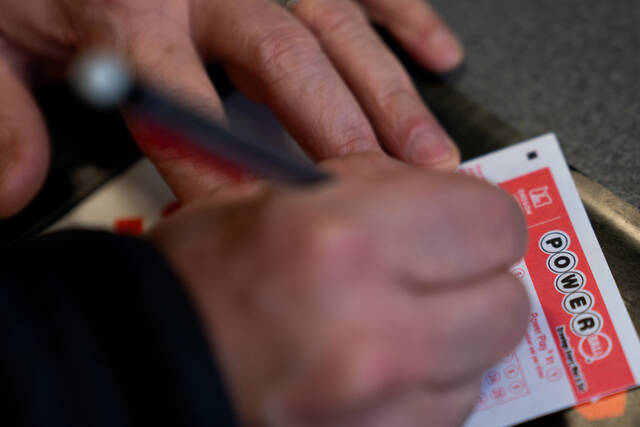The National Transportation Safety Board on Friday issued its final report on the collapse of Pittsburgh’s Fern Hollow Bridge, finding that it fell because of the “poor quality” of inspections, “insufficient oversight” of the inspection program and repeated failure by the city to act on maintenance and repair recommendations.
“Although maintenance and repair recommendations were repeatedly made in the bridge inspection reports, the city failed to act on several of these recommendations, which led to progressive deterioration and the collapse of the bridge,” the report said.
The 447-foot-long bridge, which carried Forbes Avenue over Frick Park, collapsed, starting at the west end, at 6:37 a.m. on Jan. 28, 2022.
The structure fell about 100 feet, sending a bus as well as four vehicles into the ravine. A fifth car drove off the east abutment as the bridge was falling.
At least four people were injured, the report said.
The span in Regent Square carried just over 21,000 vehicle per day, according to a 2019 report. On the morning of the collapse, traffic was light because of a snowstorm and school delays.
Last month, the safety board held a hearing and voted on the probable cause of the collapse, finding that the City of Pittsburgh ignored years of warning about the bridge’s condition.
“This bridge did not collapse by an act of God,” said board member Michael Graham at the Feb. 21 hearing. “It collapsed because of a lack of maintenance and repair.”
Friday’s detailed report blamed the collapse on the failure of the transverse tie plate on the bridge’s southwest leg stemming from extensive corrosion and section loss.
That, the report continued, was caused by clogged drains allowing water to run down the bridge legs and accumulate at the bottom.
An engineer, who worked on the bridge and as a team leader, said in an interview that the primary problem was the clogged scuppers and downspouts on almost all of the city’s bridges.
“And that he ‘told them (the City) to clean the thing, clean the thing. Nothing was done.’”
Inspection reports dating to 2005, the investigation found, documented heavy section loss in various parts of the bridge, resulting in a series of maintenance and repair recommendations, including fixing the holes; reinforcing the metal and cleaning and painting the superstructure, particularly the legs.
Further, inspections in 2019, 2020 and 2021 showed all four bridge legs were in severe condition because of corrosion, warranting a structural review, the investigation showed.
“No evidence was found that such a structural review was performed,” the report said.
The investigation found that the city’s failure to act on the report recommendations led to the bridge’s failure.
The board also said that the Pennsylvania Department of Transportation provided “insufficient oversight” of the city’s bridge inspection program and that the contractors hired by the agency to do the inspections, although certified, were not in compliance with the Federal Highway Administration and the American Association of State Highway and Transportation Officials guidance.
Regarding the ineffectiveness of the bridge inspection program, the report cited specific examples including the failure of inspectors to clean corrosion off bridge legs to obtain accurate measurements of section loss; the failure to identify Fracture-Critical Members that would have resulted in the need for more urgent repairs; and the failure to properly calculate the load rating by measuring the asphalt surface of the bridge.
At the time of the collapse, the bridge did not have the capacity to handle the recommended load rating, the board found. The asphalt surface on the bridge was nearly double the thickness indicated in inspection reports and had not been accounted for in calculations.
“The NTSB concludes that multiple inspectors of the Fern Hollow Bridge, contracted by PennDOT on behalf of the city over a period of more than 15 years, failed to (1) clean corrosion before measuring, (2) accurately quantify remaining material, (3) accurately rate the general bridge superstructure condition, and (4) recommend a structural review of the bridge legs; and these failures contributed to the bridge’s inability to support the loads it was rated for before the collapse.
The 136-page report noted that, at the time of the collapse, the city did not have a preventative maintenance schedule in place to clean out the stormwater drainage system and did not have in-house resources to do that work.
The safety board report noted that since the collapse, the city has made several changes to address these types of deficiencies in the future, and PennDOT has revised several policies that will allow it to improve the identification of at-risk bridges.
The board issued a number of recommendations as a result of its investigation, including that the city establish a system to maintain paving records and that PennDOT develop a plan to publish annual aggregate data on bridge maintenance and repair recommendations.




